
Attachment and Bonding, Mental Health, Parenting Advice
MH: Infant Mental Health and the importance of secure attachment
Posted on 12th June 2020
You might have noticed quite a few tweets on our Twitter feed this last week with the #IMHAW2020 hashtag and wondered what it was all about…
The aim of Infant Mental Health Awareness Week – for that is what the initials stand for – is to raise awareness of babies’ emotional wellbeing, and this year’s theme has been 20:20 Vision: Seeing the world through babies’ eyes.
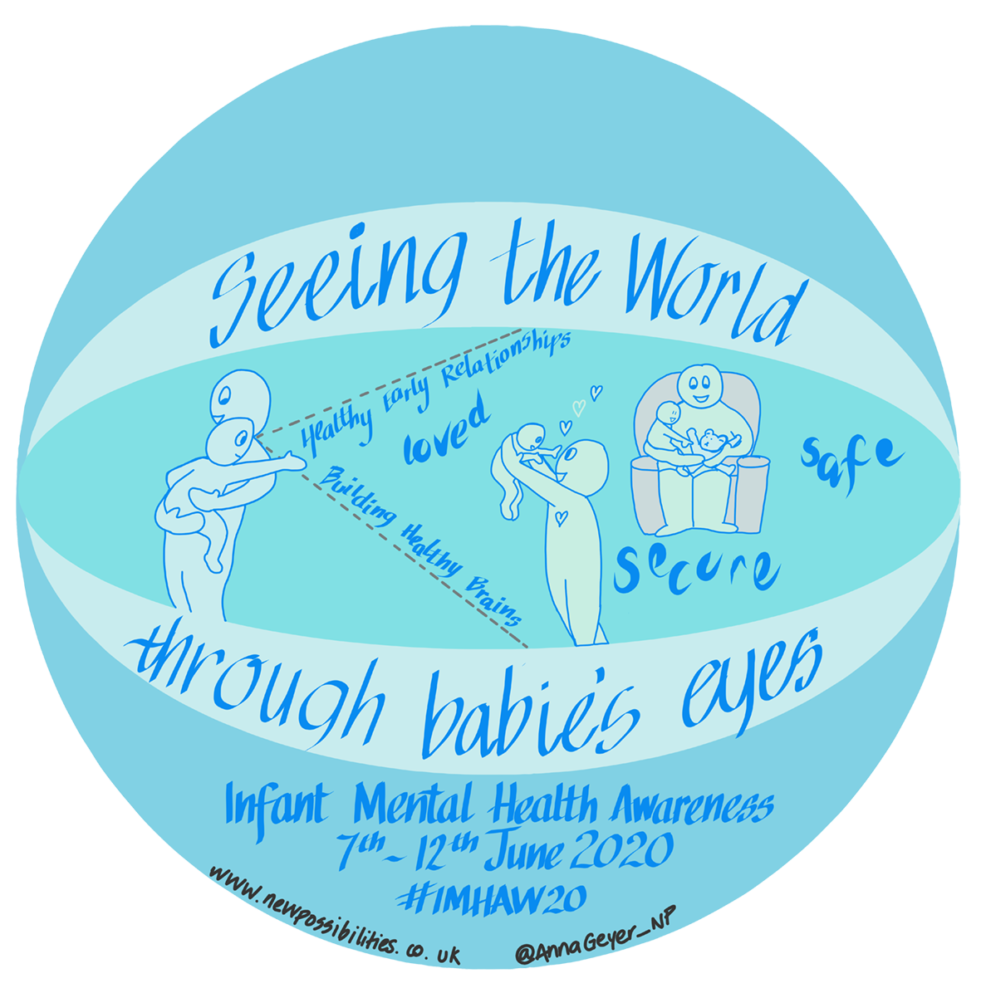
Image from Anna Geyer – www.newpossibilities.co.uk (used with permission)
What is infant mental health and why does it matter?
Many people may be surprised with the concept of ‘infant mental health’, so it is perhaps helpful to use a definition from the Parent-Infant Foundation website:
Infant mental health describes the social and emotional wellbeing and development of children in the earliest years of life.
As parents, we have a vital role to play in our children’s development, and during the first 1,001 days of their lives – from conception through to the age of two – our input is vital:
…the quality and content of the baby’s relationship with their parents has a physiological effect on the neurobiological structure of the growing child’s brain that will be enduring…. The baby’s brain seems ‘designed’ to adapt itself on a neurological level to the quality of early relationships that define the caregiving environment.
Robin Balbernie – The importance of secure attachment for infant mental health
This is because, throughout the initial days, weeks and months of their lives, our babies’ brains are developing at an unbelievably fast rate, making new connections at a rate of one million per second. The brain’s ability to change and mould itself in response to all that it experiences and is exposed to is referred to as plasticity, and this plasticity is most strong throughout infancy.
Forming a secure attachment
One of the best things that we can do as parents, then, is to work to ensure that our children experience a positive relationship and secure attachment with us, as their primary caregivers, from the very beginning of their lives. Attachment is the link – or bond – that is experienced between a baby and its parents or caregivers.
A child or person that has benefitted from a secure attachment will be more ‘protected’ from the challenges which will come with life. Although no guarantee of lifelong good mental health, the securely attached child will have the ‘toolkit’ in place to be more resilient, confident and adaptable when coming up against difficult situations; they are also more likely to have good self-esteem, self-control, and the ability to empathise with others. Importantly, because of all of this, they will be better able to thrive and take full advantage of all opportunities – especially in terms of education – that they receive in life. What an amazing gift to be able to give to your child!
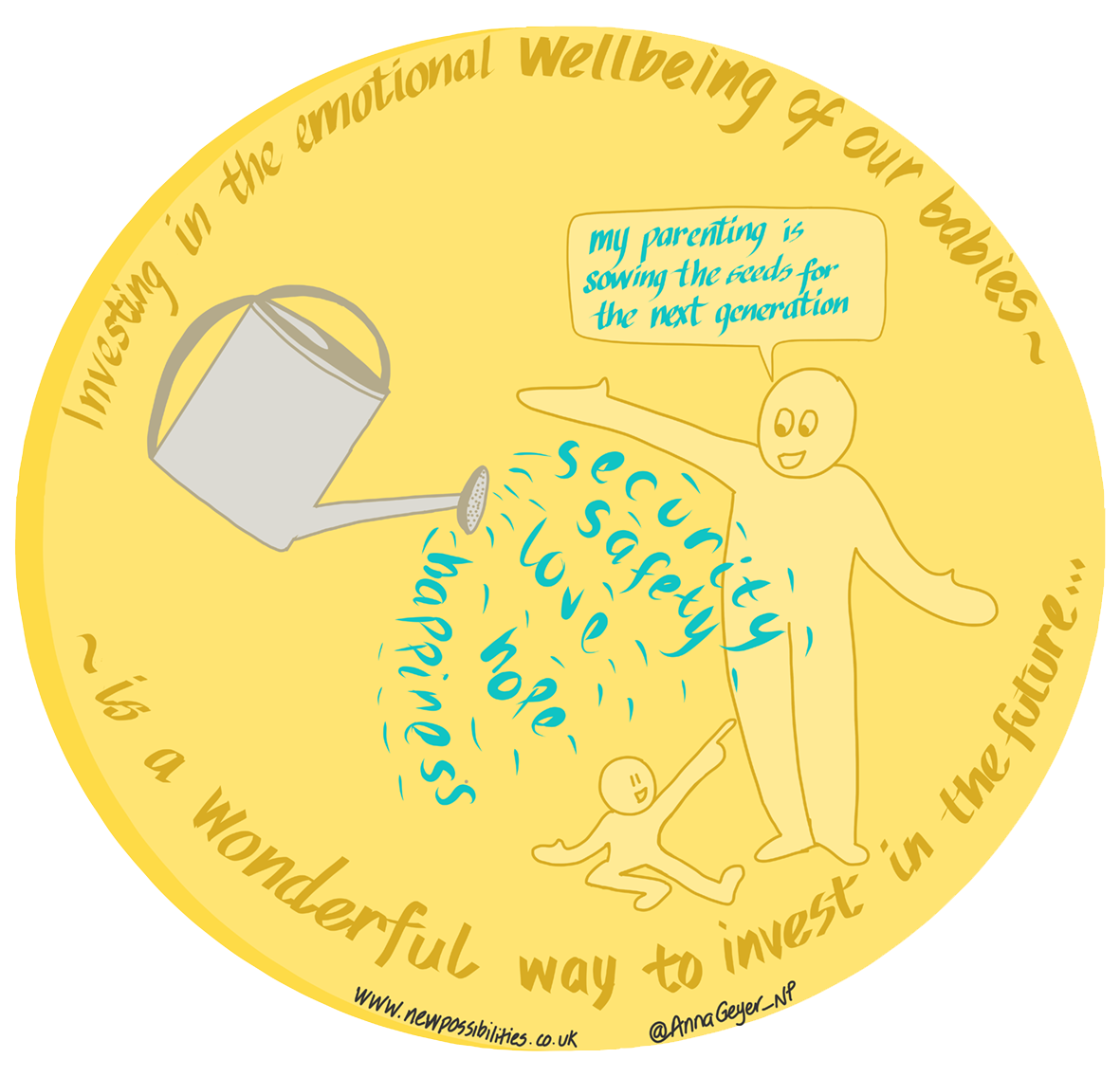
Image from Anna Geyer – www.newpossibilities.co.uk (used with permission)
So, how do we do our best to help our babies achieve a strong and positive relationship with us – a secure attachment – and the potential to reap all of the benefits that come with it? It’s actually really very straightforward and simple…
Crucially, we must spend time with our babies, holding and cuddling them, touching them, talking to them, looking at them and responding to them and their needs. Every time we interact positively with our babies, we are making them feel safe, loved and ‘heard’ – and this, in turn, is helping their brains continue to develop positively.
Communication and play
Grasp every opportunity to communicate with your baby: use both non-verbal (smile, laugh, make funny faces, etc) and verbal forms of communication. If you’re not sure what to talk to baby about, just tell them what you’re doing, or what you have done, today. Use a gentle but interesting voice – they’ll soon start ‘talking’ back to you.
A great example on the importance of responding to and communicating with your baby can be seen in the ‘Still Face’ experiments carried out by American psychologist Edward Tronick in the 1970s:
[TW: this video could cause an emotional reaction]
There are other examples of the experiment available online, including this one involving dads, all demonstrating the effect that both positive and negative (‘still face’) interaction can have on a baby.
Playing together is also important. Even with a very young baby, you can start to gently interact with them and this will all help in continuing to forge a positive bond between the two of you and to help their brain develop. Things like ‘peep-po’, gentle tickling games, counting fingers and toes, and ‘round and round the garden’ are all great ideas to start with. You’ll soon think of more, and you’ll soon get to know what your baby loves best.
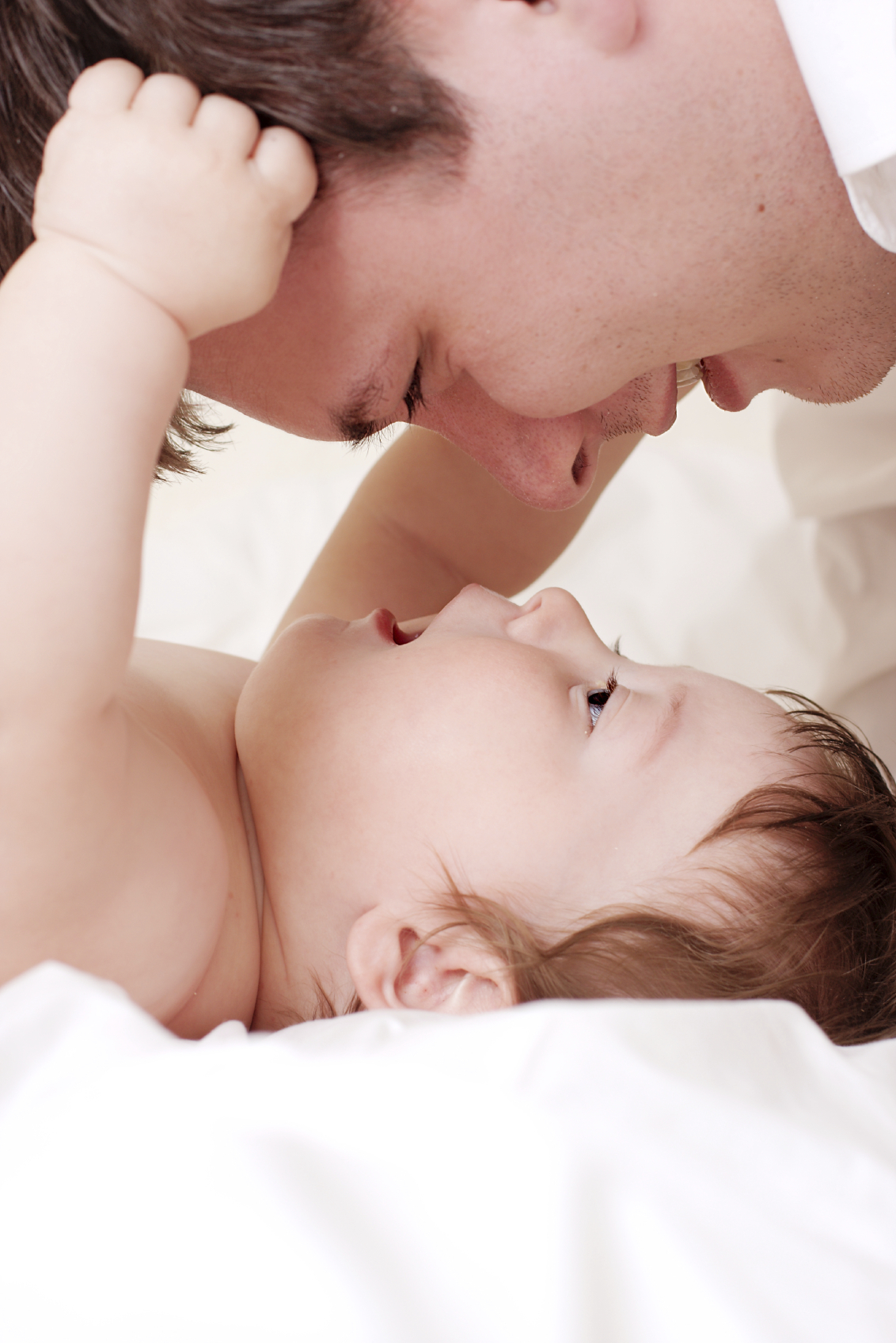
One advantage of interacting positively with your baby is that it will also help your own mental health, by keeping you calm and reducing the stress that you might be feeling in your new role. And that, in turn, is again benefitting your baby!
Regulation and response
Alongside all the fun, though, another important role for us as parents is to help our babies regulate their behaviour. As they grow older, within the safety of secure and loving relationships with their primary caregivers and with the right neurological development in place, they will gain the skills to do this for themselves, but – for now – we need to help them.
This is why we need to respond to their needs and help them to ‘settle’ whenever they are distressed or overtired. Although you might be enjoying playing with them, or you might have just come in from a day at work and want to spend time with your baby, remember that their needs must always come first: if they are showing signs of being tired, help them to settle to sleep.
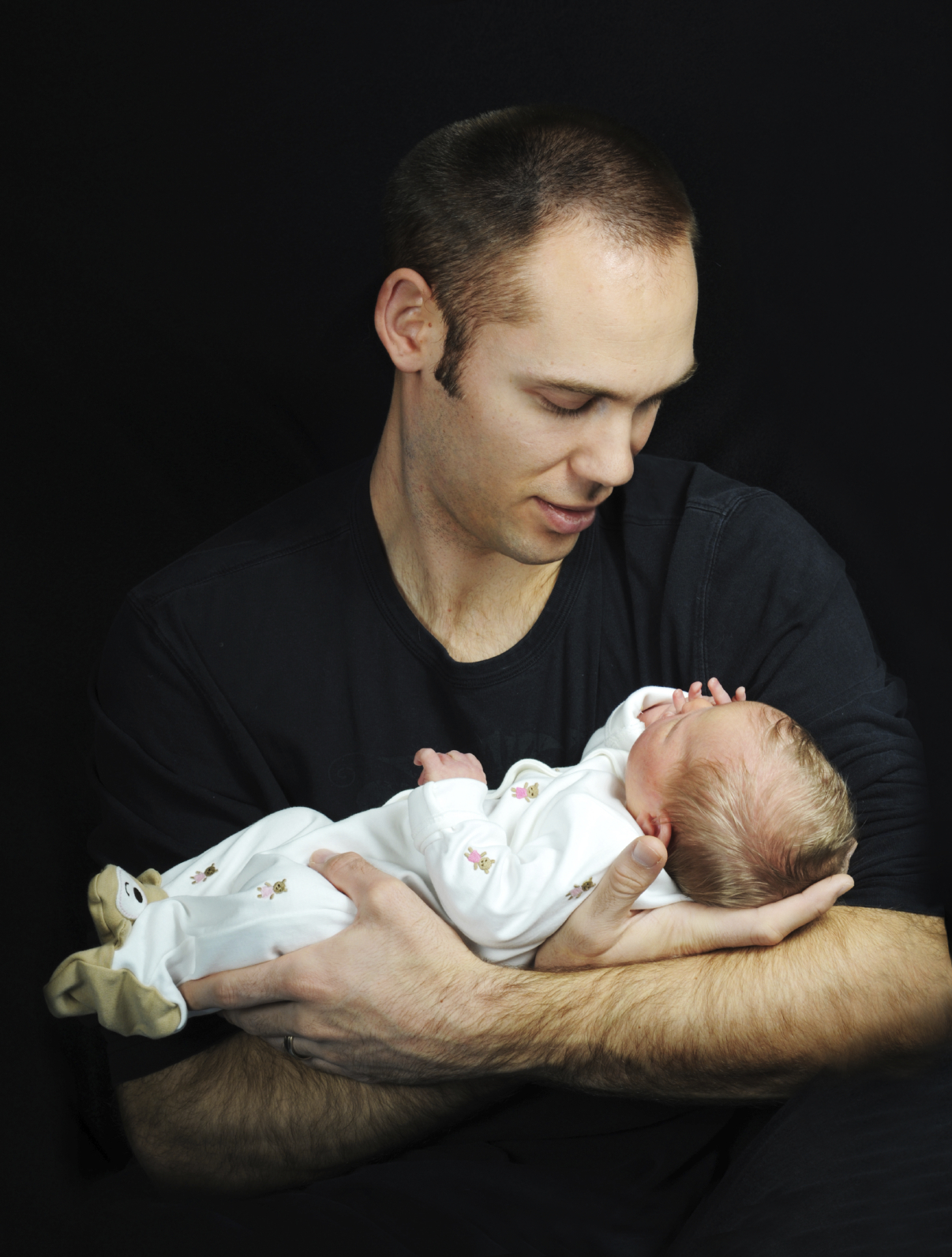
Responding to baby’s needs can be tricky if you find yourself faced with some of the myths that are out there. You might – for example – have been told not to pick baby up every time that he cries, for fear of ‘spoiling’ him or creating a ‘rod for your own back’. None of this is true – in fact, evidence now shows that the longer baby cries without receiving a response, the more stress that he is experiencing, which in turn is negatively affecting his brain development. Babies cry in order to communicate with us – usually, to let us know that they need something – and it is our role as parents to learn to understand and help them.
Next steps…
If you feel that you want to try and do all the things discussed in this blog post, but aren’t sure how to go about it, there are lots of ways to gain advice help.
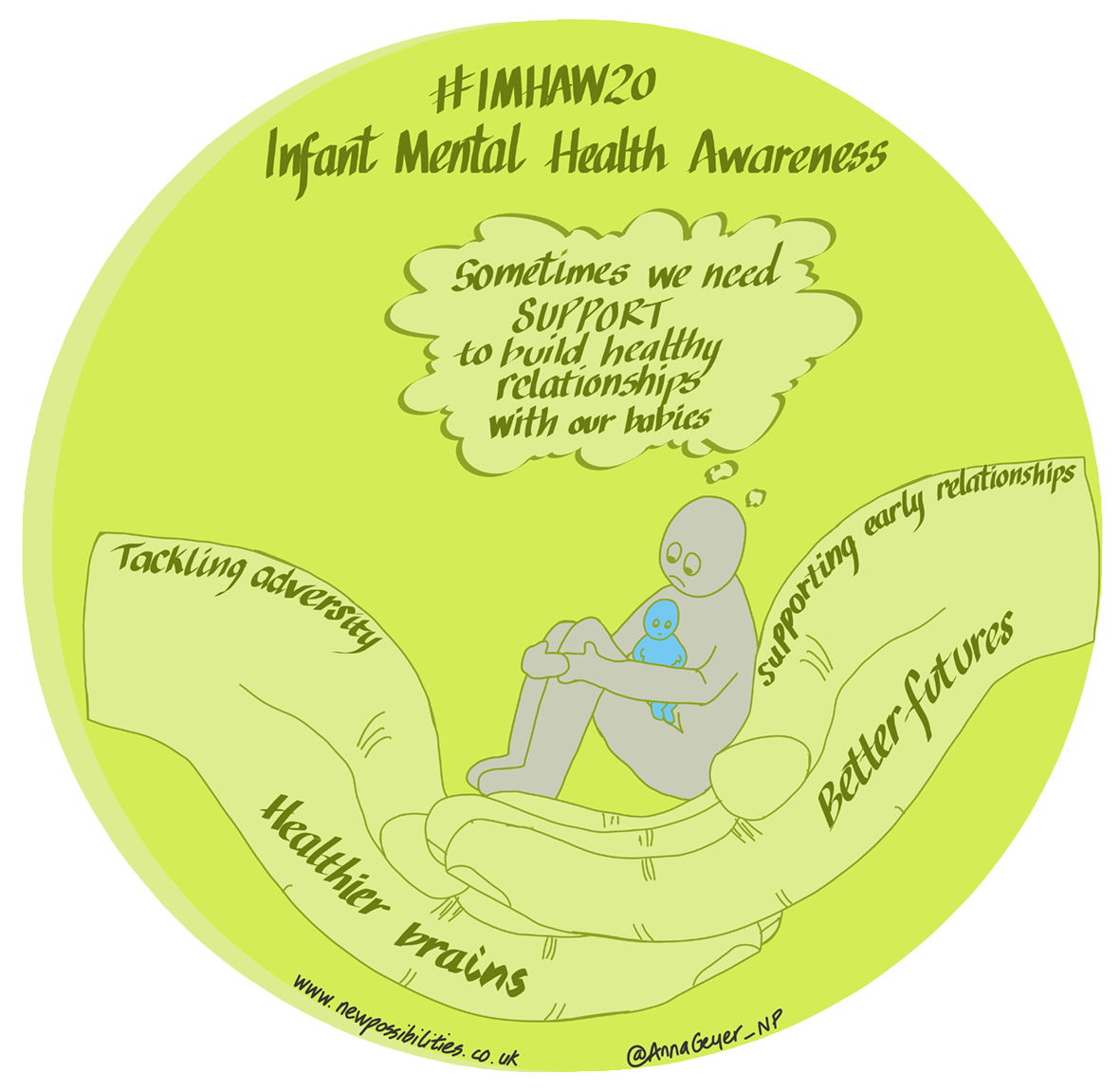
Image from Anna Geyer – www.newpossibilities.co.uk (used with permission)
First of all, try speaking with your partner. They may have some ideas on what has worked for them, or they may be feeling similarly uncertain. Discussing your concerns together is a great place to start.
You might also have some friends or relatives that you are close to and that you trust to give good advice: speak to them and ask for ideas.
Don’t forget, too, the health professionals that you will have around your family. Health Visitors, in particular, are there for helping families learn more about all aspects of parenting, so write down your concerns or worries and have them ready to discuss at your next visit or chat.
And the DadPad is also a great source of information on all aspects of parenting, including ideas on how to bond with and care for your baby, and the importance of good mental health for all the family. The DadPad app is available across many areas of the country – you can download it to your tablet or smartphone for free via the link. Once downloaded, you’ll be able to find out if it’s available where you live. If it’s not, we hope that it will be soon – but, in the meantime, you can purchase a hard copy of the DadPad from our website.

